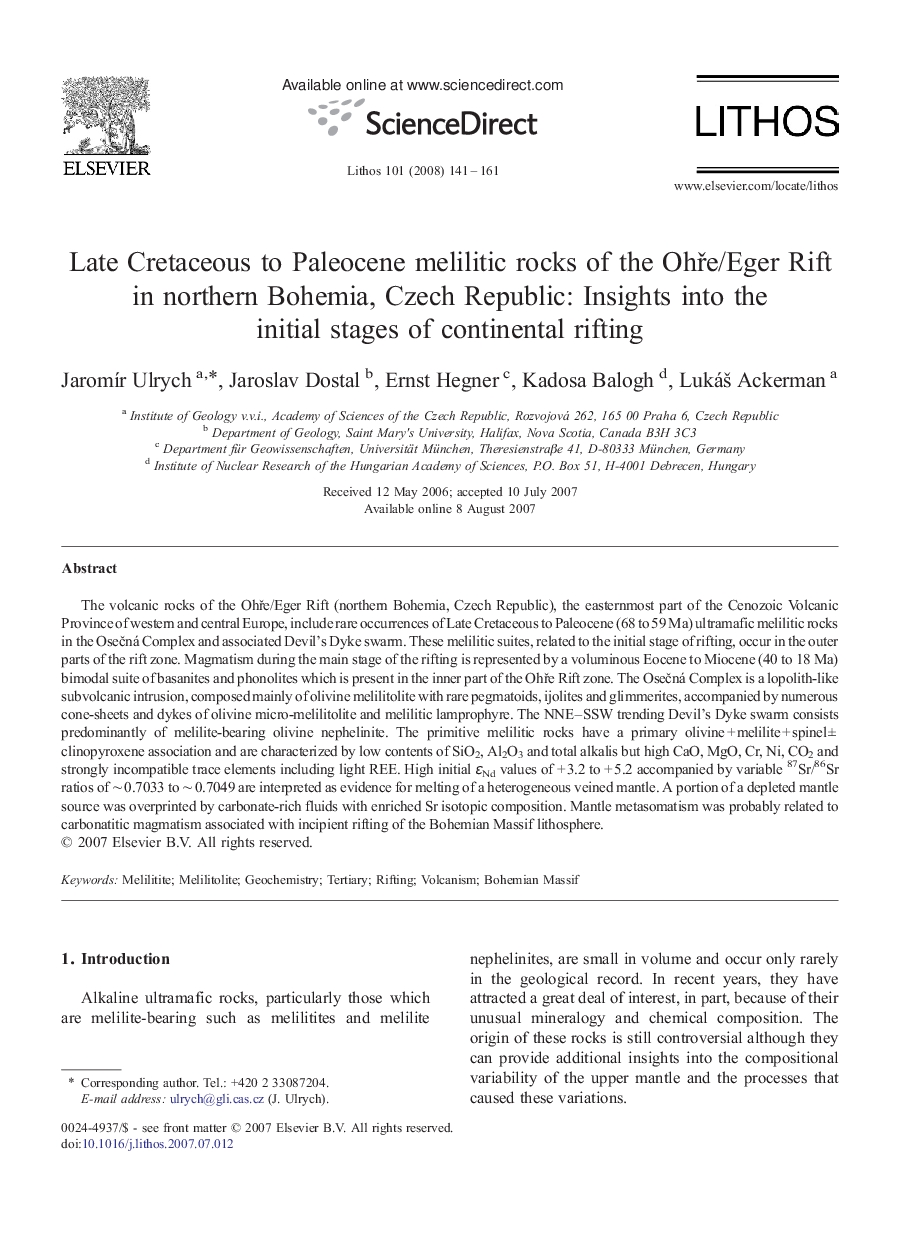| Article ID | Journal | Published Year | Pages | File Type |
|---|---|---|---|---|
| 4717593 | Lithos | 2008 | 21 Pages |
The volcanic rocks of the Ohře/Eger Rift (northern Bohemia, Czech Republic), the easternmost part of the Cenozoic Volcanic Province of western and central Europe, include rare occurrences of Late Cretaceous to Paleocene (68 to 59 Ma) ultramafic melilitic rocks in the Osečná Complex and associated Devil's Dyke swarm. These melilitic suites, related to the initial stage of rifting, occur in the outer parts of the rift zone. Magmatism during the main stage of the rifting is represented by a voluminous Eocene to Miocene (40 to 18 Ma) bimodal suite of basanites and phonolites which is present in the inner part of the Ohře Rift zone. The Osečná Complex is a lopolith-like subvolcanic intrusion, composed mainly of olivine melilitolite with rare pegmatoids, ijolites and glimmerites, accompanied by numerous cone-sheets and dykes of olivine micro-melilitolite and melilitic lamprophyre. The NNE–SSW trending Devil's Dyke swarm consists predominantly of melilite-bearing olivine nephelinite. The primitive melilitic rocks have a primary olivine + melilite + spinel ± clinopyroxene association and are characterized by low contents of SiO2, Al2O3 and total alkalis but high CaO, MgO, Cr, Ni, CO2 and strongly incompatible trace elements including light REE. High initial ɛNd values of + 3.2 to + 5.2 accompanied by variable 87Sr/86Sr ratios of ∼ 0.7033 to ∼ 0.7049 are interpreted as evidence for melting of a heterogeneous veined mantle. A portion of a depleted mantle source was overprinted by carbonate-rich fluids with enriched Sr isotopic composition. Mantle metasomatism was probably related to carbonatitic magmatism associated with incipient rifting of the Bohemian Massif lithosphere.
